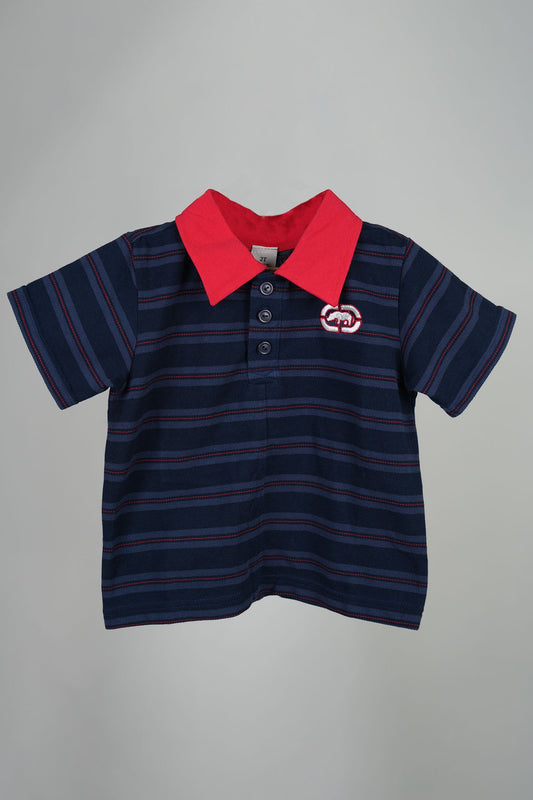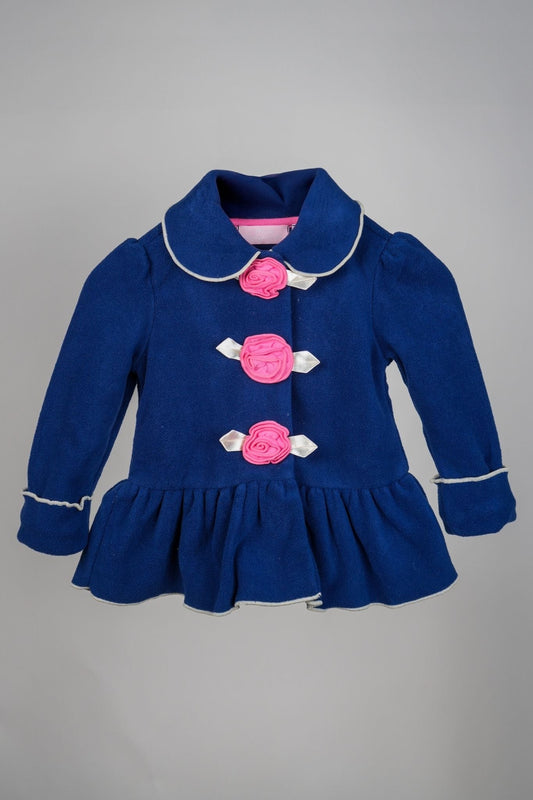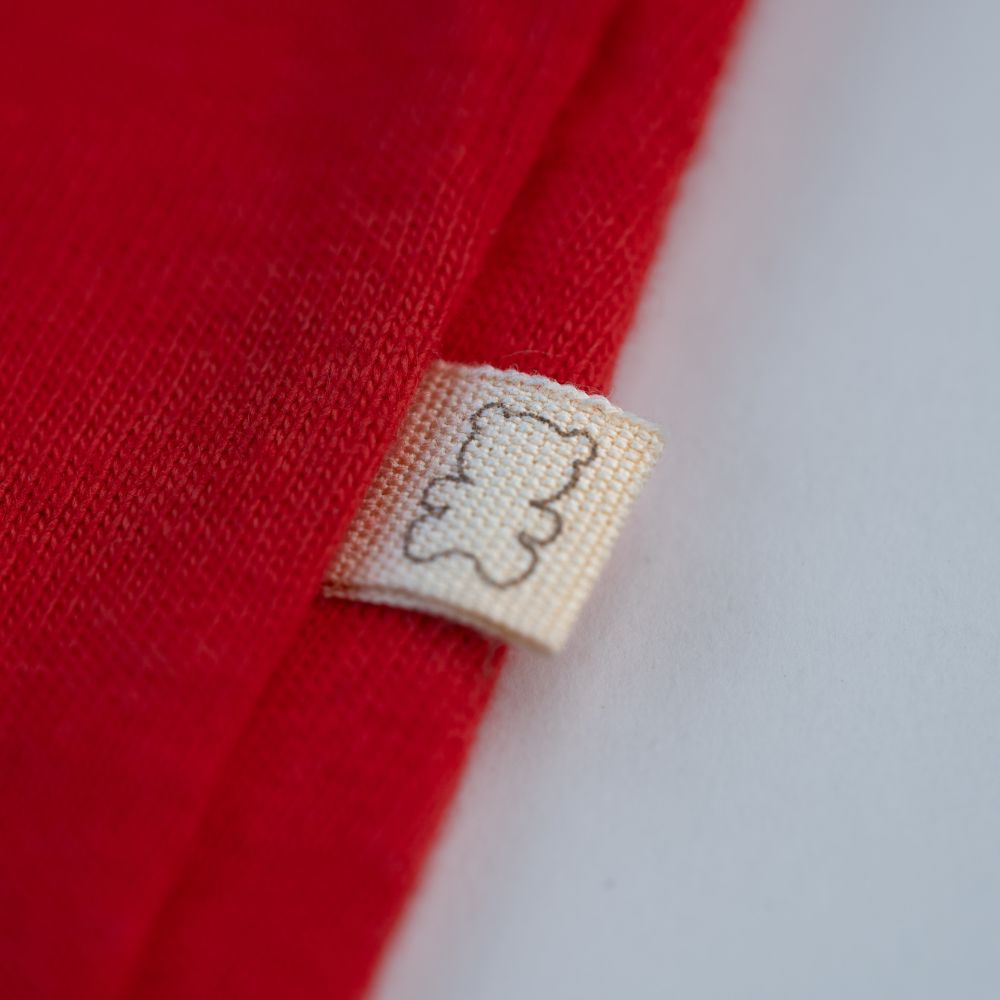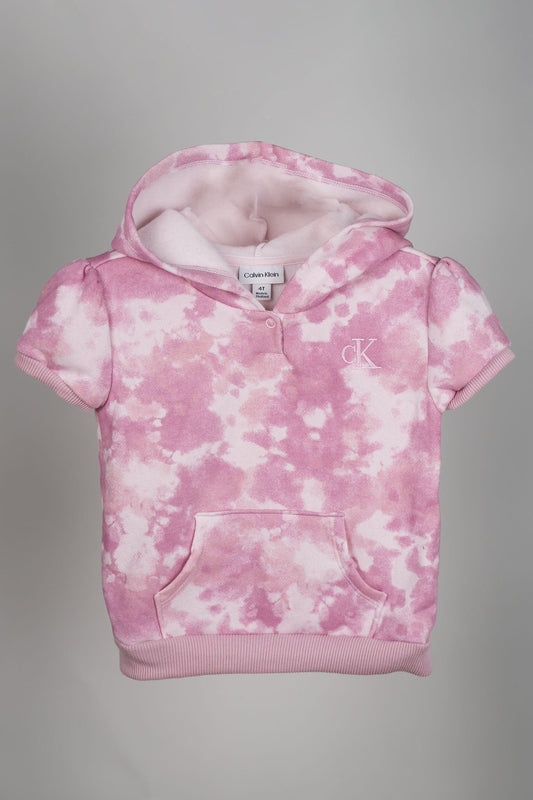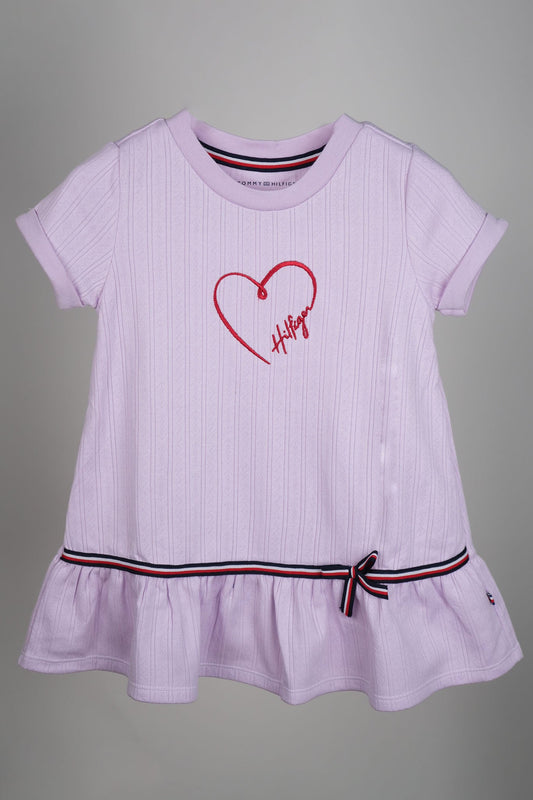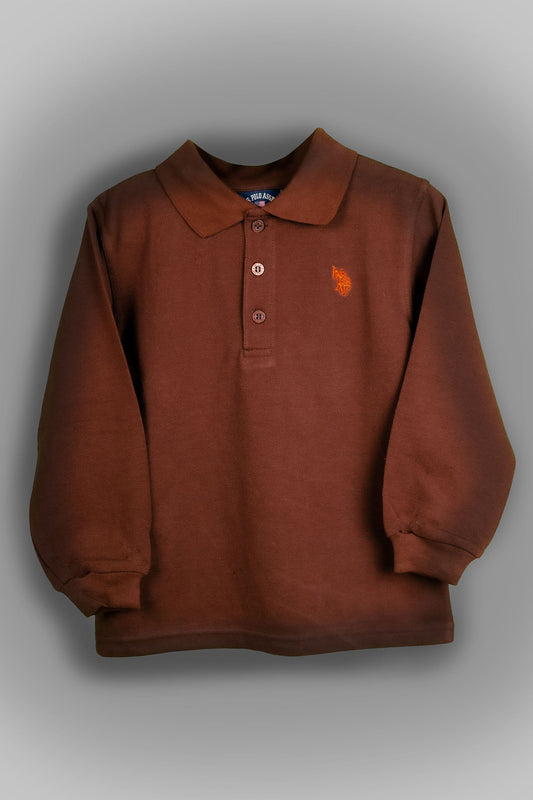7 Proven Strategies to Keep Your Kids' Clothes Looking Brand New
As parents, we all know how quickly kids can outgrow their clothes, but that doesn't mean they have to look worn out before they've been outgrown. Kids' clothes often face a lot of wear and tear from active play, frequent washing, and everyday mishaps. Maintaining their new look can seem like a daunting task, but it's entirely possible with a few practical strategies. By adopting the right care techniques, you can extend the lifespan of your children's wardrobe, ensuring they stay vibrant and fresh longer. This not only helps in saving money but also teaches your children the value of taking care of their belongings. Here are some essential tips for maintaining your children's clothing, keeping them looking as good as new for as long as possible.
1) Follow Care Instructions on Kids' Clothing
One of the simplest yet most effective ways to keep your kids' clothes looking new is to follow the care instructions provided on the labels. These instructions are specifically designed to help you maintain the fabric's quality and appearance. Ignoring them can lead to shrinkage, fading, and wear and tear that could have been easily avoided. Here’s how to make the most out of these guidelines:
Reading Labels Carefully:
- Fabric Types: Different fabrics require different care. For instance, cotton might withstand hot washes, but delicate fabrics like silk or wool need gentler handling.
- Washing Instructions: Look for specific symbols and instructions on the labels. Some clothes might need cold water washes, while others can handle warm or hot water.
- Drying Recommendations: The label will indicate whether an item should be tumble dried, air-dried, or laid flat to dry. Following these instructions prevents unnecessary stretching or shrinking.
- Ironing Guidelines: Some fabrics might need low-heat ironing or no ironing at all. High heat can damage the fabric or cause colors to fade.
Sorting Laundry:
- By Color: Separate whites, darks, and colors to prevent color bleeding. This step is crucial for preserving the brightness of your kids’ colorful clothes.
- By Fabric Type: Wash heavy items like jeans separately from delicate items to prevent damage.
Using Appropriate Detergents:
- Gentle Detergents: Choose mild, hypoallergenic detergents that are free from harsh chemicals. These are not only better for your child’s sensitive skin but also gentler on the fabrics.
- Avoid Bleach: Unless the care label specifically mentions it, avoid using bleach as it can weaken the fibers and cause colors to fade.
Washing Techniques:
- Cold Water Washes: Use cold water whenever possible. Cold water is gentler on fabrics and helps preserve colors.
- Gentle Cycle: For delicate fabrics and special items, use the gentle or delicate cycle on your washing machine.
Handling Stains Promptly:
- Immediate Attention: Treat stains as soon as they happen. The longer a stain sits, the harder it is to remove.
- Appropriate Stain Removers: Use stain removers that are safe for the specific fabric type. Always test a small area first to ensure it doesn’t cause any discoloration.
2) Use Gentle Detergents for Kids' Garments
Using gentle detergents is crucial for maintaining the quality and longevity of your kids' clothes. Harsh chemicals in regular detergents can be too aggressive for delicate fabrics and sensitive skin, leading to premature wear and potential skin irritation. Here’s how you can make the most out of gentle detergents:
Choosing the Right Detergent:
- Hypoallergenic Options: Opt for hypoallergenic detergents that are free from dyes, fragrances, and harsh chemicals. These are designed to be gentle on sensitive skin, which is especially important for infants and young children.
- Natural Ingredients: Look for detergents with natural ingredients. Plant-based detergents are typically milder and less likely to cause fabric damage or skin irritation.
- Enzyme-Free: Detergents without enzymes are less aggressive and better for maintaining the integrity of the fabric over time.
Benefits of Gentle Detergents:
- Preserve Fabric Quality: Gentle detergents help maintain the fabric's natural fibers, preventing them from breaking down or becoming rough. This is essential for ensuring that your kids' clothes remain soft and comfortable.
- Color Retention: Harsh detergents can cause colors to fade quickly. Gentle detergents, on the other hand, are less likely to strip the fabric of its dye, helping clothes maintain their vibrant colors.
- Skin Safety: Children have sensitive skin that can react to harsh chemicals found in some detergents. Gentle detergents reduce the risk of skin irritation, rashes, and allergies.
Using the Detergent Correctly:
- Proper Measurement: Follow the recommended amount of detergent as specified on the packaging. Using too much detergent can leave residue on the clothes, making them stiff and irritating to the skin. Too little may not clean effectively.
- Pre-Soaking: For tough stains, pre-soak the clothes in a mixture of gentle detergent and water before washing. This helps break down stains without the need for harsh stain removers.
- Cold Water Washing: Pairing gentle detergents with cold water washes can further protect the fabric while still providing effective cleaning.
Combining with Fabric Softeners:
- Natural Softeners: Consider using natural fabric softeners like white vinegar or baking soda, which can help maintain the softness of the clothes without introducing harsh chemicals.
- Avoid Conventional Softeners: Many conventional fabric softeners contain synthetic fragrances and chemicals that can counteract the benefits of gentle detergents.
Eco-Friendly Options:
- Biodegradable Detergents: Eco-friendly detergents are often biodegradable and free from phosphates and other harmful chemicals. They are not only gentle on clothes but also better for the environment.
- Concentrated Formulas: Concentrated gentle detergents require less packaging and water, making them an eco-conscious choice. They are often more effective, requiring smaller quantities per wash.
Incorporating gentle detergents into your laundry routine is a simple yet impactful way to care for your kids' clothes. By choosing products that are kind to both fabric and skin, you ensure that the clothes remain in excellent condition, feel comfortable, and look their best for longer. This thoughtful approach to laundry not only extends the life of your children’s wardrobe but also provides them with the utmost comfort and protection.
3) Separate Laundry
Separating laundry is a key step in maintaining the quality and longevity of your kids' clothes. Different fabrics, colors, and types of clothing have unique care needs, and sorting them correctly before washing can prevent damage and keep clothes looking new. Here’s a detailed guide on how and why to separate your laundry effectively:
Color Separation:
- Whites: Always wash white clothes separately to prevent color bleeding. This keeps them bright and free from any unwanted color transfers.
- Darks: Dark colors, like blacks, blues, and browns, should be washed together. Washing them separately from lighter colors prevents darker dyes from bleeding onto lighter fabrics.
- Brights: Brightly colored clothes, such as reds, oranges, and yellows, should be grouped together. This helps maintain their vibrant hues and prevents them from dulling or transferring onto other colors.
Fabric Types:
- Delicates: Delicate fabrics, including baby clothes made from soft, organic cotton, need special care. Wash these items in a separate load on a gentle cycle to avoid damage.
- Heavy Fabrics: Items like jeans, jackets, and towels should be washed separately from lighter fabrics. Their heavy weight and rough texture can cause wear and tear on more delicate items.
- Synthetic Fabrics: Synthetics like polyester and nylon should be washed separately. These materials can create friction that damages natural fibers.
Level of Dirtiness:
- Heavily Soiled Clothes: Clothes with significant dirt, stains, or odors should be washed separately from less soiled items. This ensures a more thorough clean and prevents dirt from transferring.
- Lightly Soiled Clothes: Lightly worn clothes that are not heavily soiled can be washed together on a shorter, more gentle cycle.
Special Care Items:
- Stain Treatments: Clothes that have been pre-treated for stains should be washed separately to ensure the stain removers do not affect other garments.
- Fastenings and Embellishments: Items with zippers, buttons, or embellishments like sequins and beads should be separated to avoid snagging and damage to other clothes.
Temperature Considerations:
- Cold Wash: Separate clothes that require cold water washing to prevent shrinkage and color fading.
- Warm/Hot Wash: Items that can withstand higher temperatures should be washed separately. Hot water is effective for killing germs and removing tough stains but can be harsh on delicate fabrics.
Benefits of Separating Laundry:
- Preserves Fabric Quality: By washing similar fabrics together, you reduce the risk of damage caused by friction and abrasion.
- Maintains Color Integrity: Separating clothes by color prevents dyes from bleeding and mixing, keeping colors vibrant and whites bright.
- Increases Longevity: Properly sorted laundry experiences less wear and tear, which extends the lifespan of your kids’ clothes.
- Effective Cleaning: Different fabrics and soil levels require different wash settings. Separating laundry allows for optimal washing conditions, ensuring clothes are thoroughly cleaned.
Practical Tips for Separating Laundry:
- Laundry Baskets: Use multiple laundry baskets or hampers for sorting clothes by color, fabric, and soil level as they are taken off.
- Pre-Sorting: Teach children to pre-sort their laundry. This can be a fun and educational activity that instills good habits early on.
- Labeling: Label hampers or bins for different categories to make sorting easier for everyone in the household.
Separating laundry is a simple yet effective way to maintain the quality of your kids' clothes. By paying attention to color, fabric type, and soil level, you can ensure that each item receives the care it needs. This not only keeps clothes looking new and vibrant but also extends their lifespan, providing better value and more enjoyment from your children’s wardrobe.
4) Treat Children Stains Promptly
Treating stains promptly is crucial for keeping your kids' clothes looking new and fresh. Children are naturally active and prone to spills and stains, whether from food, dirt, or craft materials. Addressing these stains quickly and effectively can prevent them from setting in and becoming permanent. Here's how to manage stains promptly:
Immediate Action:
- Blot, Don't Rub: When a stain occurs, immediately blot the excess with a clean cloth. Rubbing can push the stain deeper into the fabric fibers.
- Cold Water Rinse: For most stains, a quick rinse under cold water can help prevent the stain from setting. Avoid hot water as it can set protein-based stains like milk or blood.
Identify the Stain Type:
- Grease and Oil: Sprinkle baking soda or cornstarch on the stain to absorb excess oil, then gently brush it off. Treat with a dish soap solution before washing.
- Protein-Based: For stains like blood or baby formula, use an enzyme-based cleaner. These cleaners break down protein molecules effectively.
- Tannin Stains: For tea, coffee, or juice stains, use a mixture of vinegar and water or a commercial stain remover.
Pre-Treatment Solutions:
- DIY Solutions: A paste made from baking soda and water can be effective for many stains. Apply it to the stain, let it sit for a few minutes, then rinse.
- Commercial Stain Removers: There are many effective stain removers available. Follow the instructions carefully for the best results.
Stain Removal Techniques:
- Soak Method: For stubborn stains, soak the garment in a mixture of water and a stain remover or detergent for at least 30 minutes before washing.
- Scrubbing: Gently scrub the stained area with a soft brush or cloth to help lift the stain. Be careful not to damage delicate fabrics.
Washing:
- Check Before Drying: After washing, check if the stain is gone before drying. Heat can set any remaining stain, making it harder to remove.
- Repeat if Necessary: Some stains may require multiple treatments. Repeat the process if the stain is still visible after the first wash.
5) Air Dry Kids' Clothes When Possible
Air drying is a gentle and eco-friendly way to keep your kids' clothes looking new. While machine drying is convenient, it can be harsh on fabrics and cause shrinkage, fading, and wear over time. Air drying helps preserve the integrity and appearance of clothing. Here’s how to air dry effectively:
Benefits of Air Drying:
- Fabric Preservation: Air drying reduces wear and tear caused by the high heat and tumbling action of dryers.
- Color Retention: Clothes dried in natural air retain their vibrant colors longer, as there is less risk of fading compared to machine drying.
- Energy Savings: Air drying reduces energy consumption, which is better for the environment and lowers your utility bills.
Best Practices for Air Drying:
- Use a Clothesline: Hang clothes on a clothesline or drying rack. Ensure they are spread out to allow air circulation and faster drying.
- Avoid Direct Sunlight: While sunlight can naturally bleach whites, it can also fade colors. Hang clothes in a shaded area or indoors to protect colors.
- Shake Out Clothes: Before hanging, shake out clothes to reduce wrinkles and speed up drying time.
- Use Hangers for Delicates: Delicate items like baby frocks can be hung on padded hangers to maintain their shape and prevent stretching.
Indoor Air Drying:
- Drying Racks: Use foldable drying racks for indoor drying, especially during inclement weather. Place them in well-ventilated rooms to speed up drying.
- Avoid Damp Areas: Place drying racks away from damp or poorly ventilated areas to prevent mold and mildew growth.
6) Store Baby Clothes Properly
Proper storage is essential for keeping your kids' clothes looking new and ready for use. Storing clothes correctly prevents damage, preserves their shape, and keeps them fresh for longer. Here’s how to store kids' clothes effectively:
Clean Before Storing:
- Wash and Dry: Always wash and thoroughly dry clothes before storing. Dirt and moisture can lead to mold, mildew, and fabric degradation.
- Stain Removal: Ensure all stains are treated and removed before storage, as they can become permanent over time.
Storage Solutions:
- Fold or Hang: Fold clothes neatly to avoid wrinkles and save space. Hang dresses, frocks, and delicate items on padded hangers to maintain their shape.
- Use Containers: Store clothes in plastic bins, vacuum-sealed bags, or fabric storage boxes. These containers protect against dust, pests, and moisture.
- Labeling: Label storage containers with the contents and sizes. This makes it easier to find and rotate seasonal clothing.
Avoid Plastic Bags:
- Breathability: Avoid storing clothes in plastic bags, as they can trap moisture and cause mildew. Use breathable cotton or fabric garment bags instead.
Climate Considerations:
- Cool, Dry Place: Store clothes in a cool, dry place away from direct sunlight. Excessive heat and humidity can damage fabrics and promote mold growth.
- Cedar Chips or Lavender: Use cedar chips or lavender sachets in storage containers to repel pests and keep clothes smelling fresh.
Rotation and Inspection:
- Seasonal Rotation: Rotate clothes seasonally to ensure they are used regularly and to check for any signs of damage or wear.
- Regular Inspection: Periodically inspect stored clothes for signs of pests, mold, or damage. Address any issues immediately to prevent further damage.
Special Care for Delicates:
- Tissue Paper: For delicate items, use acid-free tissue paper between folds to prevent creasing and color transfer.
- Separate Storage: Store delicate fabrics separately to prevent them from being crushed or damaged by heavier items.
Discover Quality Kids' Fashion with Mixmax and Expert Parenting Tips
At Mixmax, we provide high-quality, imported kids' clothing that ensures your little ones look stylish and feel comfortable. Our collections feature premium brands known for their durability, vibrant designs, and eco-friendly choices. By following our tips for keeping your kids' clothes looking new, you can extend the life of your favorite garments and keep your children looking their best. Explore our other informative blogs to learn more about baby and kids' fashion, such as How to Choose the Perfect Baby Shower Gift: Fashion and Functionality and How to Create a Capsule Wardrobe for your Kids. Visit Mixmax today to discover our latest collections and find the perfect outfits for your kids.
